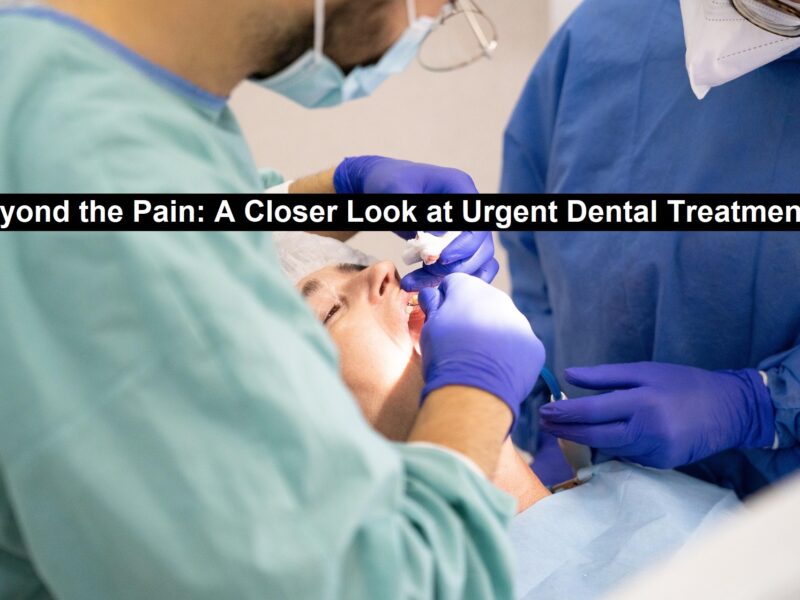Temporomandibular Joint (TMJ) disorder impacts a significant number of individuals globally, causing discomfort or dysfunction within the jaw’s connecting joint and its controlling muscles. This condition emerges from a variety of underlying causes, leading to symptoms that span a broad spectrum from slight annoyance to debilitating pain. If you are affected by TMJ, you can find relief and regain quality of life by deepening your understanding of TMJ disorder and exploring available treatments. Here is a breakdown of the etiology, clinical manifestations, and current management strategies for this ailment.
Causes of TMJ Disorder
Identifying the root causes of Temporomandibular Joint (TMJ) disorder is a complex task, largely because the condition is influenced by a variety of interrelated factors. Nonetheless, understanding what triggers TMJ disorder can enable you to avoid behaviors that can aggravate your condition and know what is the most appropriate form of treatment for you. The most common causes of TMJ disorder include:
Teeth Grinding (Bruxism)
Teeth grinding, also known as bruxism, is a prevalent factor contributing to TMJ disorder. This involuntary act can exert undue stress on the temporomandibular joint, provoking symptoms of TMJ dysfunction. Often occurring during sleep, bruxism may be a response to psychological stressors, anxiety, or even result from an irregular bite alignment. Recognizing and addressing this habit early is crucial in preventing the escalation of TMJ disorder and safeguarding the health of your jaw joint.
Arthritis
Arthritis is another prominent cause implicated in the development of Temporomandibular Joint (TMJ) disorders. This condition, particularly in its osteoarthritis and rheumatoid arthritis forms, can lead to significant inflammation, degeneration, and eventual deterioration of the jaw joint’s cartilage. Osteoarthritis, as part of the natural aging process, involves the wear and tear of the cartilage that cushions the bones of the TMJ, leading to pain and restricted movement. On the other hand, rheumatoid arthritis is an autoimmune disorder that attacks the lining of joints, including the TMJ, causing chronic inflammation, pain, and sometimes joint deformity. Early diagnosis and targeted treatment of arthritis can markedly reduce its impact on the TMJ and help preserve joint function and comfort.
Injury or Trauma
Injury or physical trauma to the jaw can precipitate TMJ disorder. Such trauma, which may stem from a forceful impact during sports, accidents, or even aggressive dental procedures, can inflict serious harm on the jaw joint and the muscles that control jaw movement. This damage can manifest as dislocation, inflammation, or even lasting changes to the joint’s alignment, ushering in a cascade of symptoms characteristic of TMJ disorders. It is crucial, therefore, for individuals who have experienced such injuries to seek prompt medical attention, as early intervention can play a pivotal role in preventing the development of chronic TMJ complications.
Misalignment of the Jaw or Teeth
Misalignment issues, whether concerning the jaw or teeth, exert undue pressure on the temporomandibular joint, acting as a catalyst for TMJ disorder. Such malocclusions or misalignments can stem from a range of causes, including genetic predispositions, childhood habits like prolonged thumb-sucking, or the absence of teeth, which can disrupt the natural alignment and balance of the jaw.
This imbalance not only triggers discomfort but also contributes to uneven wear and stress on the TMJ, potentially exacerbating or initiating TMJ symptoms. Addressing these misalignment issues through orthodontics or tailored dental treatments can significantly alleviate the strain on the TMJ, underscoring the importance of early detection and corrective measures for those with predisposed conditions.
Recognizing the Symptoms of TMJ Disorder: Why It Matters
Recognizing the symptoms of TMJ not only empowers you to take action towards alleviating your discomfort but also plays a crucial role in preventing the progression of the disorder. Early identification and treatment can halt the advancement of TMJ disorder, preserving the function of the jaw joint and improving overall well-being. If any of these symptoms resonate with your experiences, consulting with a dental or medical professional can be your first step towards reclaiming a pain-free life.
Symptoms to be mindful of include:
- Persistent Pain or Tenderness: This discomfort may localize in the jaw joint but can also radiate to the face, neck, shoulders, and even down into the upper back.
- Difficulty with Jaw Movement: Challenges in opening or closing the mouth fully can be a clear indicator of TMJ disorder, affecting eating, speaking, and even facial expressions.
- Audible Jaw Noises: Clicking, popping, or grinding sounds during jaw movements are not just mere annoyances; they signify friction or misalignment within the TMJ that needs attention.
- Headaches and Earaches: Often overlooked, recurrent headaches, and earaches can be collateral effects of TMJ disorder, stemming from the tension and imbalance in the jaw.
- Lockjaw: Experiencing a sudden inability to open or close your mouth fully is a hallmark of severe TMJ disorder, indicating that the joint’s function is significantly compromised.
- Bite Irregularities: Noticing changes in how your teeth fit together when you bite is a subtle yet telling symptom of TMJ disorder, hinting at joint or muscular alterations affecting dental alignment.
Treatment Options for TMJ Disorder
The treatment for TMJ disorder depends on the severity of the condition and its underlying cause. Some common TMJ treatment options include:
Pain Management
To relieve the pain stemming from TMJ disorder, patients often turn to common analgesics like ibuprofen or acetaminophen, available without a prescription. In cases where these are insufficient, healthcare providers may recommend more potent prescription painkillers. These medications aim to reduce the inflammation and discomfort that accompany TMJ, making it easier for patients to engage in their daily activities with less pain.
Physical Therapy
Physical therapy emerges as a pivotal element in the comprehensive treatment plan for TMJ disorder. Through a tailored regimen of exercises and manual therapy techniques, physical therapy can help patients by enhancing the flexibility, strength, and coordination of the jaw muscles and joints. Therapists may also incorporate modalities such as ultrasound therapy, moist heat, and ice to alleviate pain and reduce muscle tension. Key to this approach is not only addressing the current symptoms but also equipping individuals with strategies to prevent future episodes. By improving posture and teaching relaxation techniques, physical therapy aims to mitigate the stressors contributing to TMJ disorder, fostering long-term jaw health and functionality.
Night Guards or Splints
For individuals whose TMJ disorder stems from teeth grinding or clenching (bruxism), a proven effective treatment is the use of customized oral appliances, such as night guards or splints. These devices are meticulously designed to fit the unique contours of the patient’s mouth, providing a protective barrier between the upper and lower teeth. By wearing a night guard or splint, especially during sleep when unconscious grinding or clenching is most prevalent, patients can significantly reduce the strain placed on the TMJ.
This not only alleviates current discomfort but also minimizes the risk of future damage to the joint. Additionally, these appliances can be instrumental in correcting misaligned bites by preventing habitual teeth grinding from exacerbating the condition. It’s crucial, however, that these devices are custom-fitted by dental professionals to ensure maximum effectiveness and comfort, underscoring the importance of consulting with a dentist experienced in treating TMJ disorders for optimal results.
Read: How To Prepare To Maximize the Benefits of Your Facial
Bite Correction
Misalignment of teeth or jaw, a significant factor in the development of TMJ disorder, necessitates targeted interventions to realign and restore balance. Orthodontic treatments, including braces, clear aligners, and retainers, offer a comprehensive approach to correcting bite discrepancies that contribute to TMJ symptoms. Beyond traditional braces, modern dentistry provides innovative solutions like Invisalign for a less noticeable, more comfortable fit.
In severe cases, reconstructive dental procedures such as crowns, bridges, or implants may be required to rebuild and fortify the bite’s structure, thereby alleviating the undue pressure on the TMJ. These advanced corrective methods not only address the immediate discomfort associated with TMJ disorder but also aim to establish a harmonious alignment of teeth and jaw for long-term relief. Consulting with a dental specialist experienced in TMJ issues is essential for devising a personalized treatment plan that effectively targets the unique aspects of each case.
Conclusion
TMJ disorder can significantly impact your quality of life, but with proper understanding and treatment, it is possible to manage this condition effectively. It is essential to consult a healthcare professional for proper diagnosis and treatment as soon as you notice any symptoms. Remember to practice good oral hygiene, avoid habits like teeth grinding or clenching, and seek help if you experience any discomfort in your jaw joint or muscles. With proper TMJ treatment, you can keep your condition healthy and pain-free.



